We visited a small shop at No. 62 Hang Quat Street and talked with Dinh Thien Hung, the shop owner. He said: “This job requires the artisan’s carefulness and high concentration. Just a little negligence may lead the knife astray and the work will be wasted”. Only watching Hung meticulously carving each drawing on the stamp with curving lines and delicate motifs, we know that the young artisan is very expert in this craft.
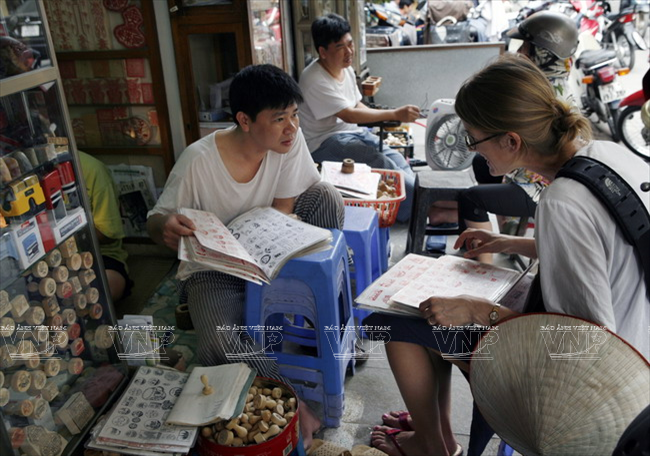
A foreign tourist learns about stamp carving at Phuc Loi Shop (No.6, Hang Quat Street).
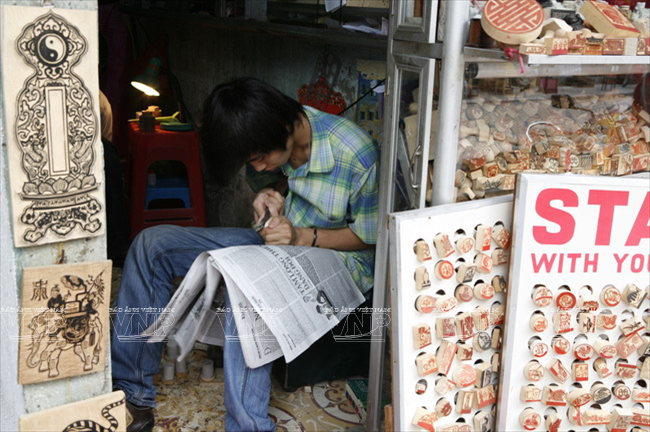
A stamp carving shop on Hang Quat Street, Hanoi.
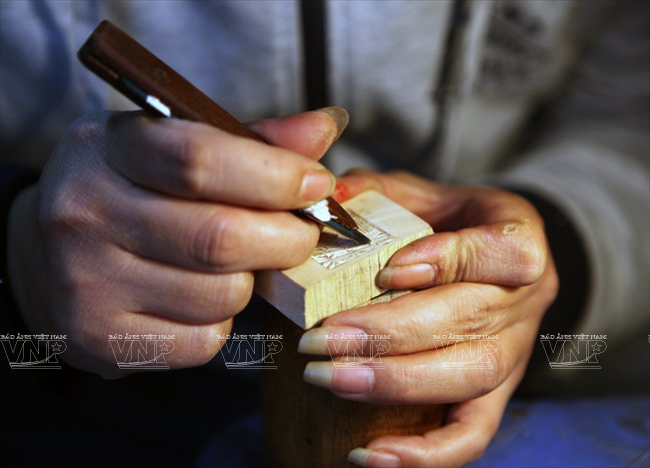
Meticulously carving on a stamp.
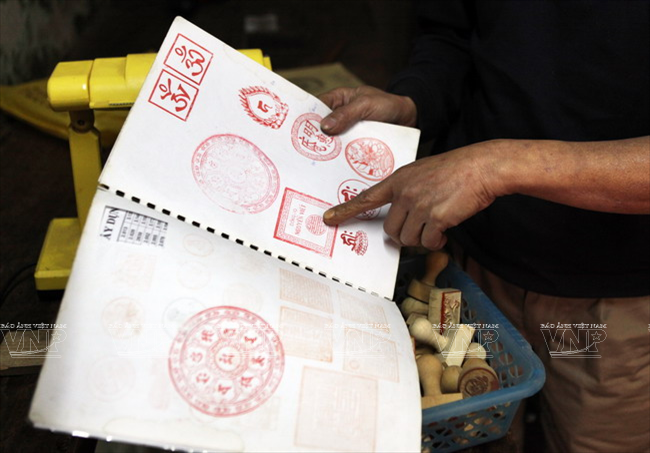
Introducing models of stamps to customers.
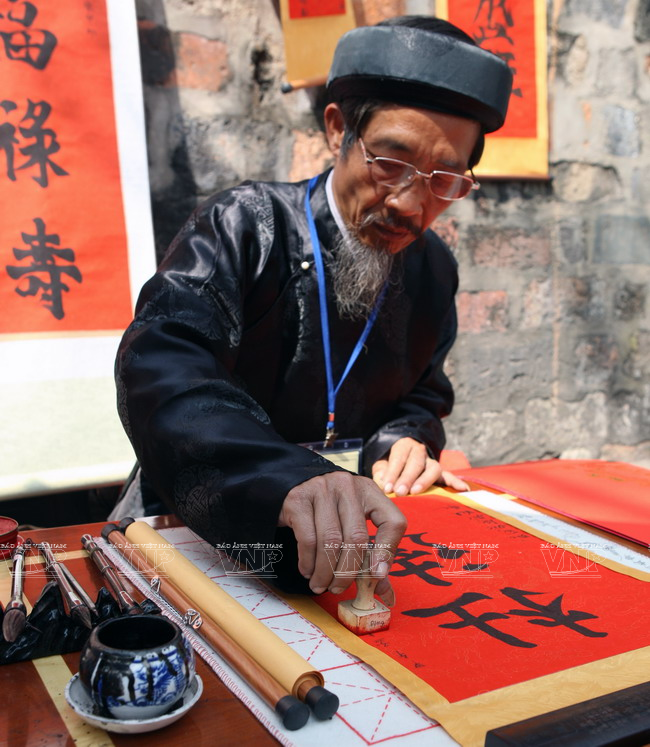
Stamps are used by scholars to imprint their names on parallel sentences.

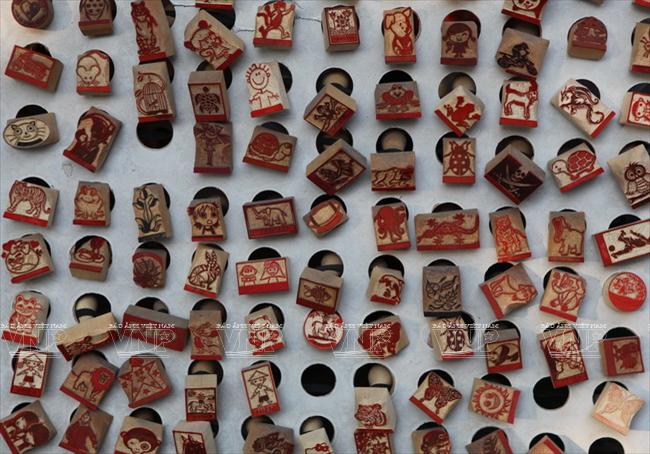
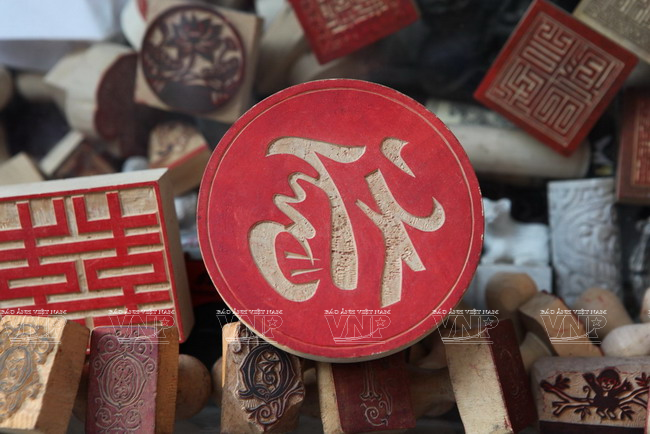
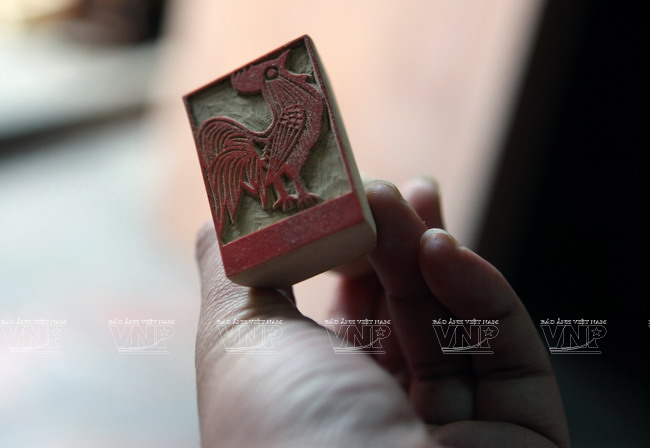
Wooden stamps of diverse styles and sizes.
Customers buy the stamps for different purposes so the carvers have to create their stamps with various content, sizes and models. They also carefully sketch the model on paper before carving on wood. As a result, the price of each wooden stamp ranges from tens of thousands of dong to a few hundred thousand dong depending on the difficulty of carving the lines.
We were talking at Hung’s store when Tashima Eruko, a Japanese girl, came to buy some small stamps. The girl said that she loved handmade products of Vietnam and she learned about the wooden stamps on Hang Quat Street through the internet. She wanted to order these stamps for her friends, each stamp engraved with the name of each person. Feeling excited when Hung put a red stamp on her hand, Tashima Eruko eagerly said: “I will buy this stamp to decorate my house, it’s so beautiful!”



